Three years ago Ringu Tulku Rinpoche made his first visit to Thailand. In February this year he returned. Following his last visit several different groups in Thailand were very eager to listen to more of Rinpoche’s teachings. I was very pleased when, once the prospect of Rinpoche’s visit to Thailand was going to happen, that the money needed for all the travel costs was raised in less than one week. This happened due to the generosity of a handful of local people. This meant that all of the donations for Rinpoche, received during his visit, would go to Rinpoche and not to travel costs.
The accommodation and food for Rinpoche and his brother Kalsang Dorjee, during their stay in Thailand was mainly donated by the 1,000 Stars Foundation based in Bangkok. The president and founder of this organization is Dr Krisadawan Hongladram [Dr Kris]. She used to be a professor in linguistics at Thailand’s premier university Chulalongkorn. She took early retirement from her post so that she could spend her time helping Tibetan Buddhism to flourish both in Tibet and Thailand. During the course her university research she decided to compile a dictionary of Tibetan dialects focusing on the Kham region of Tibet. It was during these field studies in Tibet that her heart was touched by the devotion of so many Tibetans, who despite their very hard life, through the practice of Tibetan Buddhism, managed to maintain both their dignity and joyfulness. On return to Thailand she decided to dedicate her life to help Tibetan Buddhism flourish both by helping those in need in Tibet and also by building Thailand’s first Tibetan Buddhist Stupa.
Dr Kris came to the notice of the local Thai media when she decided to prostrate Tibetan style all the way from Samye monastery to Lhasa. A little later she was contacted by one of the daughters of the current King of Thailand Princess Sirindorn asking Dr Kris to allow her to accompany her on her next fieldtrip to Tibet. This she did and they became firm friends. With the help of this princess and others Dr Kris managed to purchase a large plot of land located 4 hours drive south west of Bangkok quite close to the Burmese border. This site is protected by mountains on all sides. In the centre of this land has become the location of Thailand’s first Tibet Buddhist Stupa. The site has been named Khadiravana. Khadira is a type of tree and vana is the Thai word for forest, so named because the entire site is surrounded by many Khadira trees. It is the same type of tree under which it us said that the great Indian sage Nagarjuna had a vision of Green Tara. Because of this the entire site is also dedicated to Tara. Also on this site will be eco friendly modern style retreat huts for lay practitioners. Currently there are four other structures on the site; a kitchen and toilet block, a Tibetan style house for visiting Lamas, a prayer flag stupa and a Thai style sala where teachings take place. Currently all visitors stay in tents provided by the foundation. The whole setting is spectacular and has wild Elephants who graze adjacent the pineapple plantations at night. The Elephants actually live in Burma and each night they commute over the unmarked border to eat.
The range and scope of this organization founded by Dr Krisadawan Hongladarom can be found on this website:
http://www.krisadawan.wordpress.com
Although this website is mostly in the Thai language, if you go to this website and click on Khadiravana an English explanation of their activities is outlined. The website does not explain that they still need another 3 million €s in order to complete the construction of the 80 metre high stupa. To date 505 foundation piles have been sunk into the land. Also deep in the soil many kinds of precious Tibetan Buddhist relics have also been buried. I first heard about this project some 4 years ago and I was attracted to it because of its scale and audacity.
The setting for Rinpoche’s first talk on this trip Bangkok was the superb Buddadassa Archive building. This newly opened building is situated in the grounds of Bangkok’s largest public park [Chatuchat]. It was build as place to promote the teaching of the Dharma and was named after a famous Thai Buddhist teacher called Buddhadassa. Ironically during Buddhadassa’s lifetime he was derided by the establishment and only following his death were the importance of his teachings were officially recognized.
Wednesday 2nd February 2011
Rinpoche’s first talk in Bangkok to the 1000 Stars Foundation members and guests at the Buddadassa Archive building “The Art of Happiness”
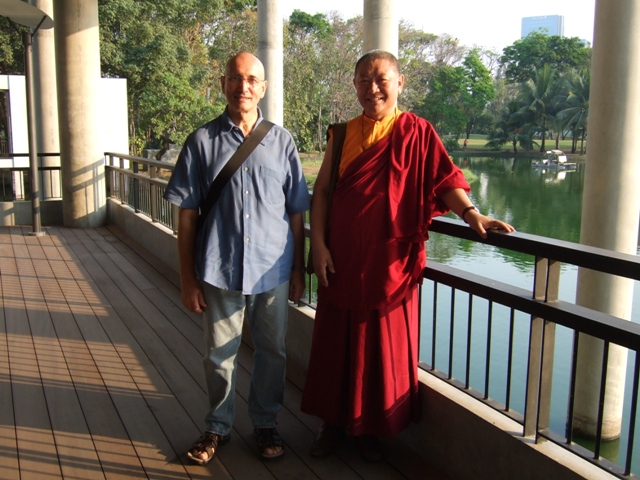
In contrast to with the previous day’s activities Thursday began with an intimate and leisurely lunch in Claudio and Mei Meis home on the Chayprao river in downtown Bangkok. Claudio is Swiss and Mei Mei is from Burma and are both very devoted Buddhists.
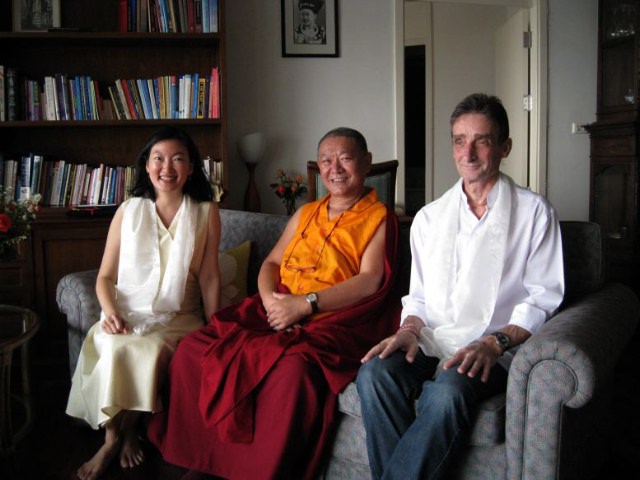
Thursday 3rd February
Bangkok The Little Bangkok Sangha
In the evening Rinpoche was the invited guest of the Little Bangkok Sangha and the location of the talk was in the Bodhgaya Hall in Bangkok. The venerable Phra Pandit an English Theravadan monk of 15 years standing formed this Sangha some three years ago in response to a need to co-ordinate everything Buddhist that was happening in the English language in Bangkok. It started with 4 people and now has several hundred members. The Little Bangkok Sangha has no physical location it can call home instead it exists mainly on the internet and makes use of donated public spaces as they become available. It was Phra Pandit who has both created and sustained this website:
Phra Pandit’s website covers all aspects of Buddhism and is totally non sectarian and invites speakers from Theravadan, Mahayanan and Vajrayanan traditions. Without his help Rinpoche’s visit to Thailand would not have been the success it was. Phra Pandit arranged most of the venues on this visit. None of the venues made any charges for the use of their facilities.
This location [the Bodhgaya Hall] forms part of the down town offices of a local Thai businessman and philanthropist Khun Danai. Khun Danai has allocated 10% of his office space for the use of Buddhist teachers of all traditions free of charge. This is a very good example of integrating one’s daily life in the service of the Dharma.
Friday 4th to Sunday 6th February
Rinpoche gives a Green Tara Empowerment at the Khidarvana Stupa site near Hua Hin organized by the 1000 Stars Foundation
The 1000 Stars Foundation chose its name from a stanza from the praises to the twenty one forms of Tara;
“Blazing with the resplendent beams of a thousand starry clusters”
Originally this organization was established to help deprived young children in Tibet. Dr Kris felt that the eyes of these young children were also like starry clusters; hence the name the 1000 Stars Foundation.
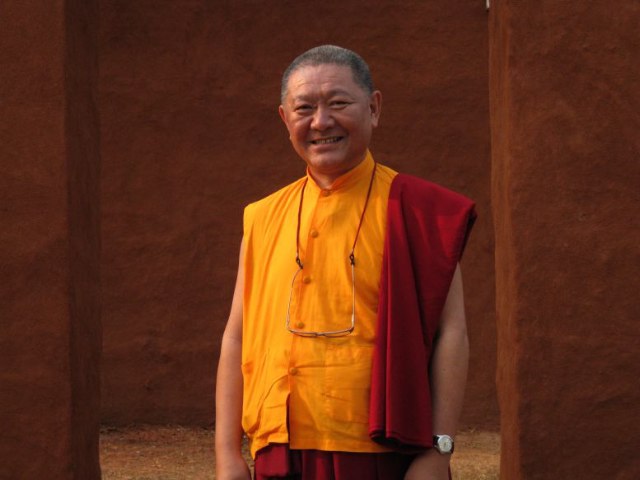
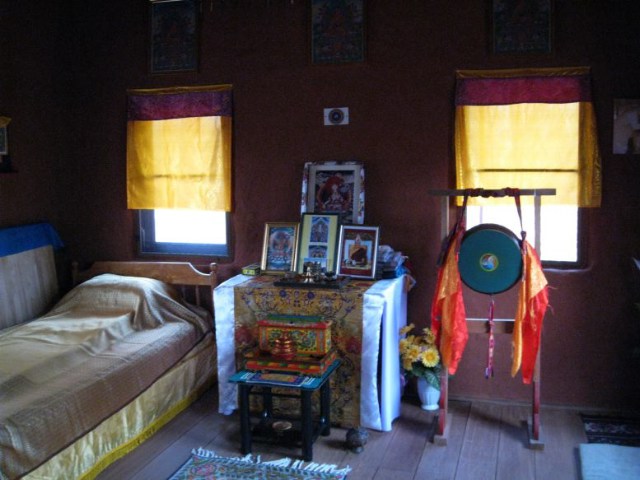
Kalsang Dorjee [Rinpoche’s brother] was sharp eyed enough to spot two quite large scorpions who had taken up residence in this house prior to Rinpoche’s arrival. Fortunately he persuaded them to leave so that they could have a good night’s sleep.



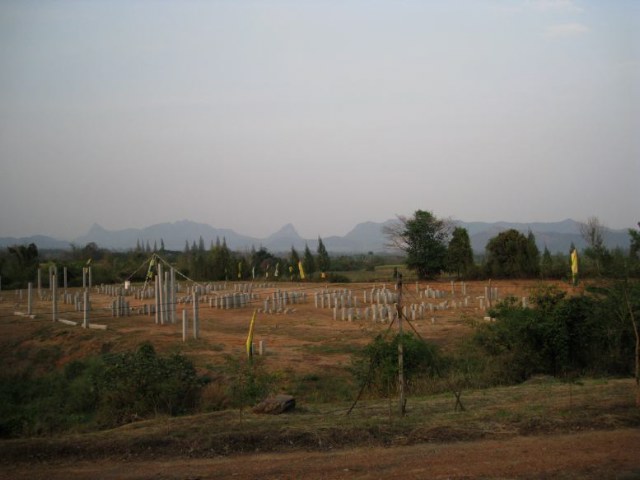
Note the 505 foundation piles that have already been sunk in readiness for the actual main construction phase.
Saturday 5th February



Following this empowerment Rinpoche offered all the donations to Dr Kris so that work on the next stage of the stupa could begin as soon as funds were available.
On Rinpoche’s last visit to this 3 years ago he planted a bodhi tree which is now 9 metres high.

The next day we all walked into the remotest part of the retreat land and meditated under a large Banyan tree. As you can see the roots of the tree have really embraced the rock on which it sits.
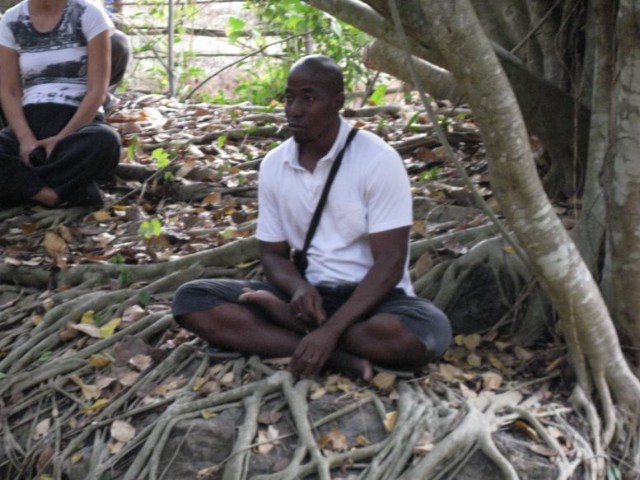
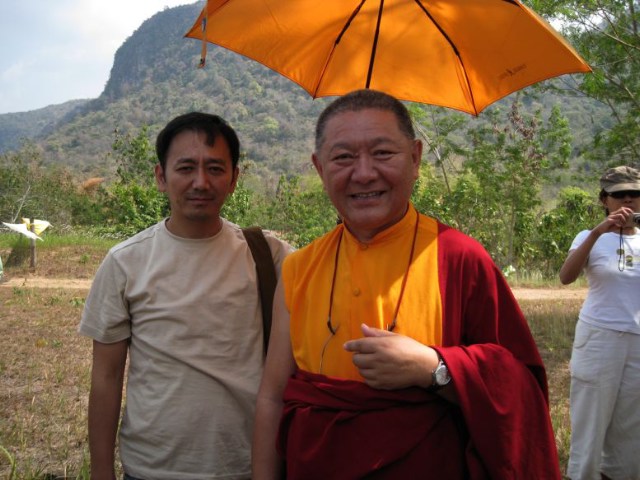
Sunday 6th February
The releasing of 250,000 fish into Kaeng Krachan Lake near Petchaburi
One hour drive north of the Khadiravana Stupa site lies the vast Keang Krachan freshwater lake. This was the location where we all went to perform a merit making Buddhist tradition of releasing 250,000 fish back in to nature.
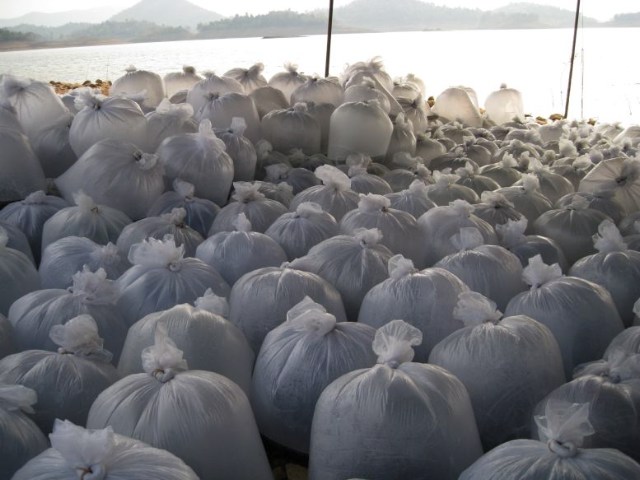
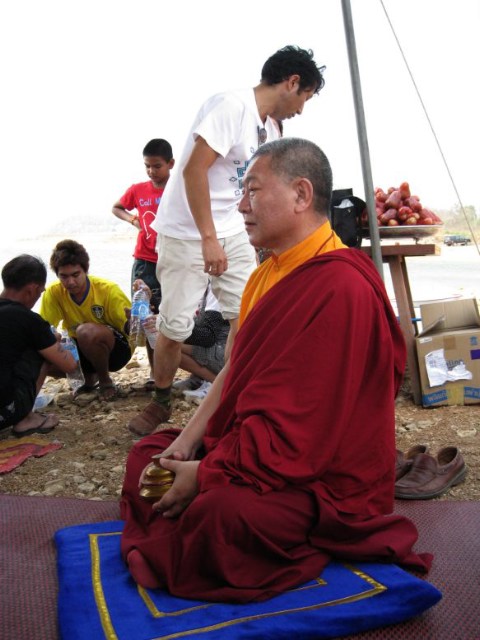
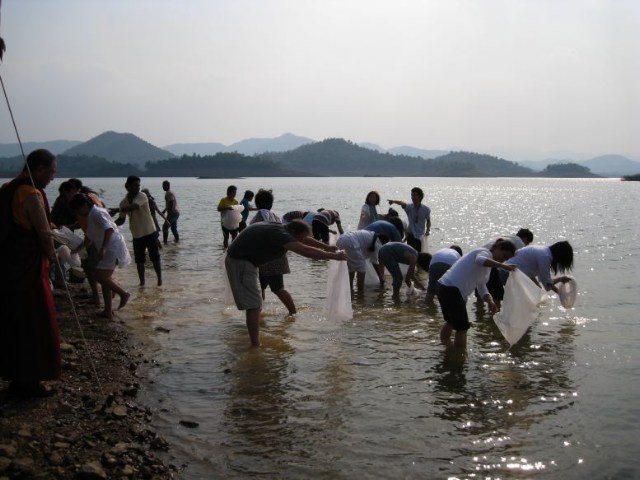
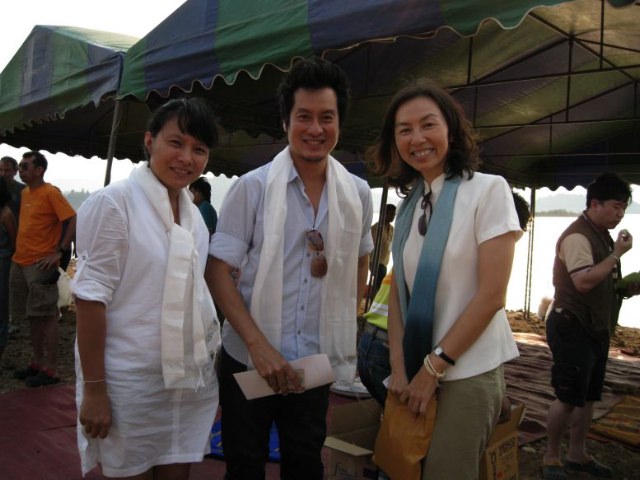

Monday 7th February
Bangkok Dammakaya complex
The Thai Tourist Board has a slogan to promote visitors to their country – “Amazing Thailand”. The Dammakaya complex in Bangkok definitely lives up to this claim. For more details please read this web link shown below.
In January 2011 this unique organization for the first time allowed a western photojournalist to document their activities. His report can be seen on this web link:
http://www.foreignpolicy.com/articles/2011/01/20/close_encounters_of_the_buddhist_kind
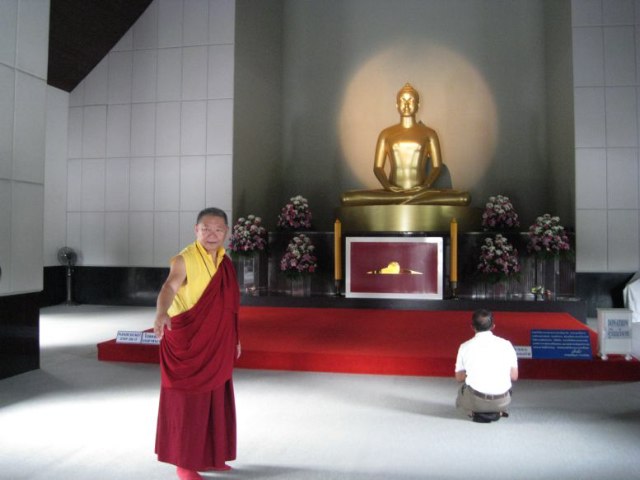

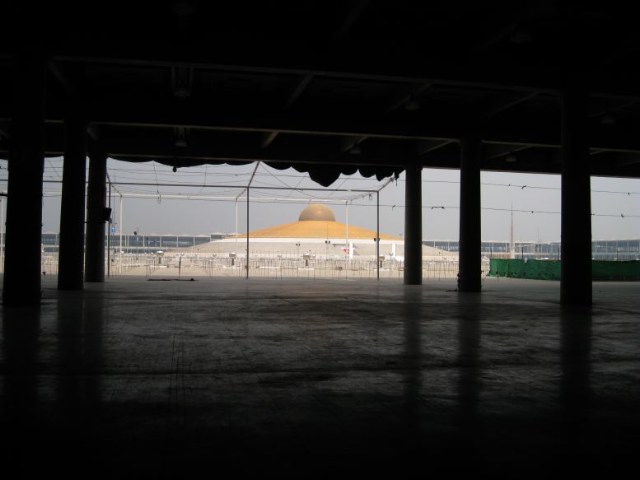
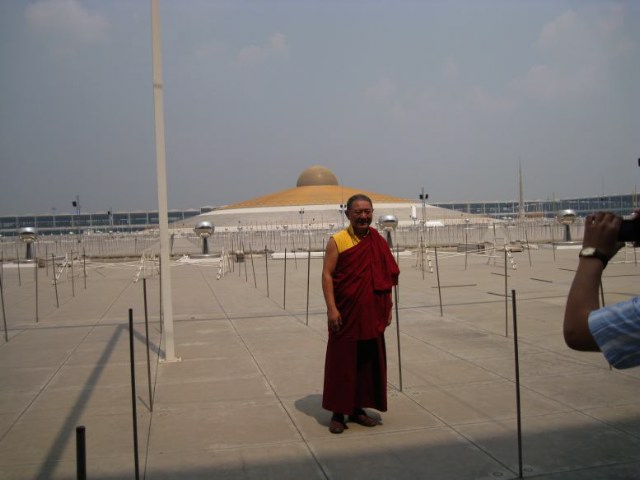
Monday 7th February
Bangkok Shambhala
Over 70 people crammed into the small space which is used for Bangkok Shambhala’s weekly meetings. Rinpoche gave a detailed introduction to the Mahamudra practice. He carefully went through each line of the Dorje Chang Tungma mindfully explaining each word.

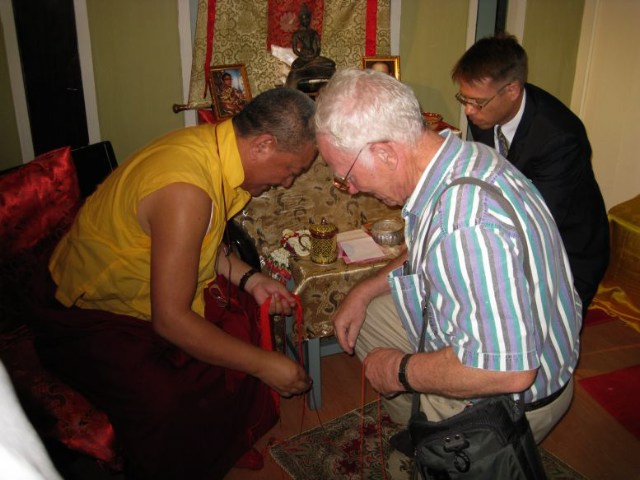
Tuesday 8th February
Bangkok Rams group

Bangkok : Jamie and Tu’s new son Vajra

Tuesday 8th February
Bangkok The Little Bangkok Sangha
The venue for Rinpoche’s talk on “The foolishness of the samsaric existence” was a local dance studio. Rinpoche again enchanted the 200 people who were present.

Wednesday 9th February
Bangkok Khun Danai’s group
This was a group of mainly Thai people who came to listen to Rinpoche’s talk on “How to transcend the attractions of samsara”. The translation was provided by Ram.
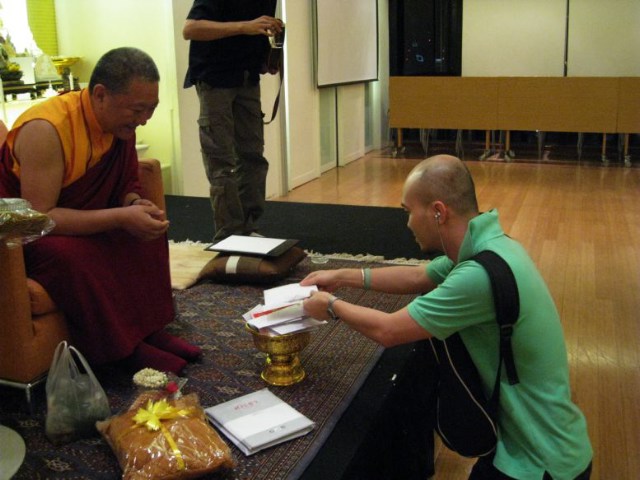

Thursday 10th February
1000 Stars Foundation house in Bangkok Tibetan Language lesson
Dr Kris organizers a weekly Tibetan class at the 1000 Stars Foundation house and invited Rinpoche to participate
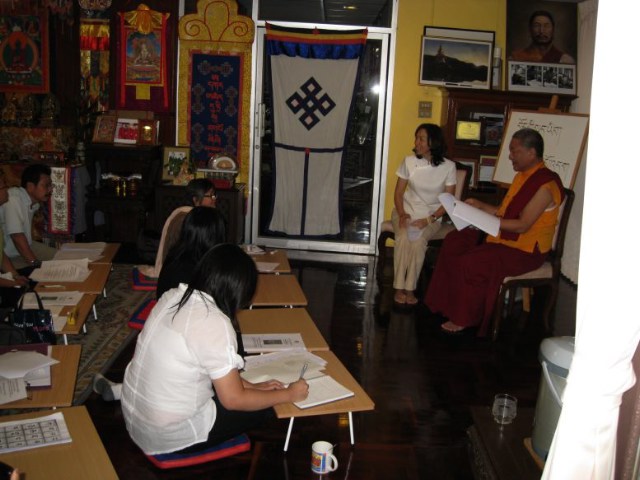
Thursday 10th February
the Siam Society Bangkok
The Siam Society was founded in 1904 under Royal patronage. One of its main aims is to promote the understanding of Buddhism. Rinpoche’s talk on “The three Buddhist yanas; why they are different and yet the same”
The audience was made up of around 100 scholars and intellectuals who engaged Rinpoche in vigorous debate following his talk.
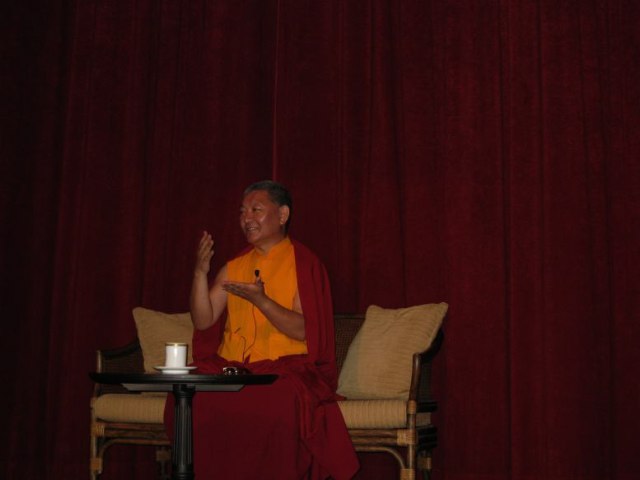
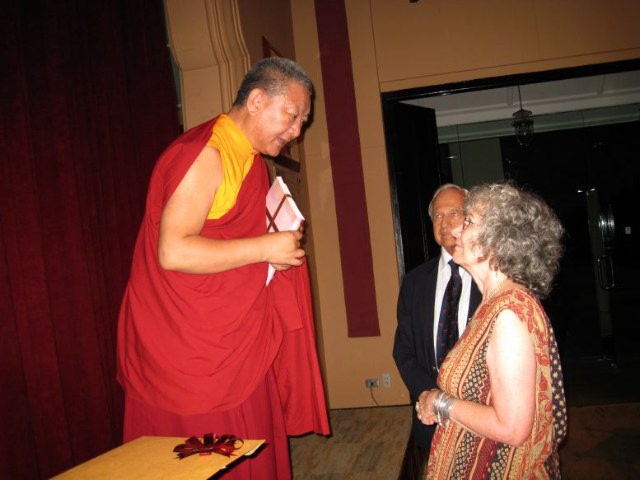
Friday 12th to Tuesday 14th February
Phuket International Mind Centre Academy
Dr Alan B Wallace met Rinpoche in Sikkim a few months prior to his visit to Thailand and invited Rinpoche to teach at his meditation centre on the island of Phuket which is about 600 miles south of Bangkok. The centre is a state of the art place for lay people to learn and practice meditation. Rinpoche was asked to give a two teaching on “Transforming Adversity”. Rinpoche based his teaching on the text by Dodrupchen Jikme Tenpe Nyima which explains in detail how even suffering can be skillfully employed to overcome adversities.
The Phuket mind centre is part of an International School which prepares students from kindergarten to the International Baccalaureate. It also has an Olympic sized swimming pool, 4 inner door tennis courts, a Brazilian soccer school and as well as an arts centre. The overall concept is the brain child of the German business man and philanthropists Klaus Hebben.

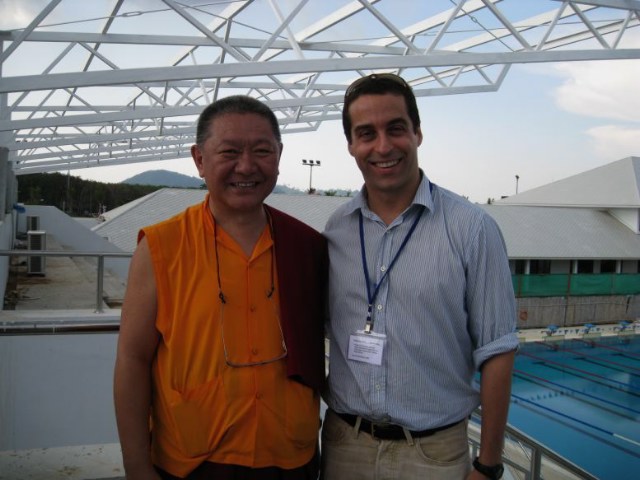

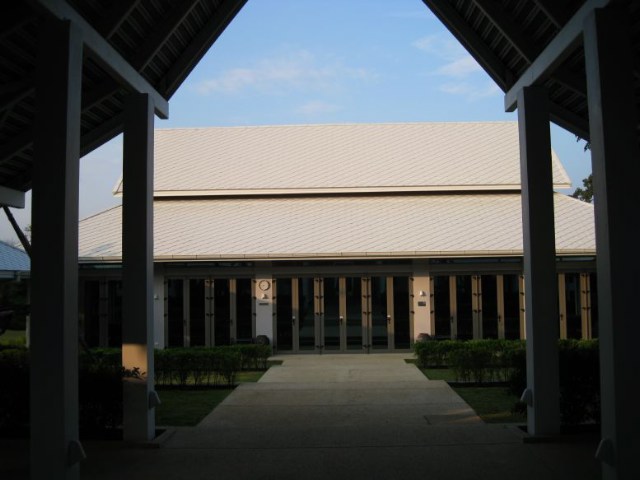

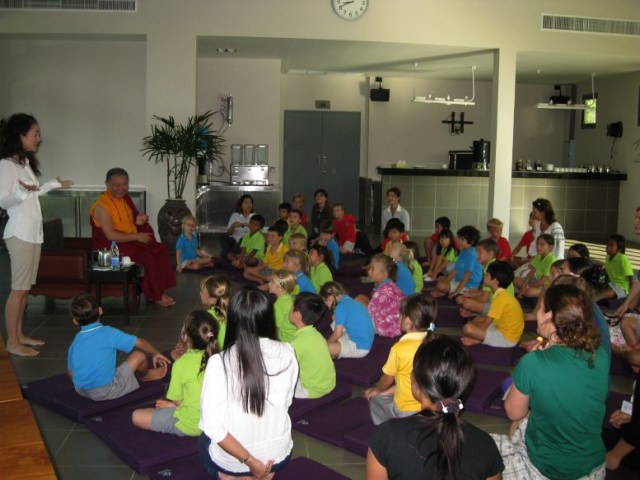
Tuesday 15th February
Little Bangkok Sangha Bangkok Rinpoche’s teaching on “Dying gracefully”
A packed upper room of the Aryiasom Villa hotel in Bangkok welcomed Rinpoche. This room normally only accommodates 35 people. Somehow everyone go in the room.
Rinpoche explained that one of the important reasons why people sometimes are very fearful about dying is because of a basic misunderstanding about life itself. He went on to outline the three other Bardos apart from the Bardo of death. Our unwillingness to accept the full implications of impermanence also caused us to fear unnecessarily about both our own deaths as well as for loved ones. To illustrate this point he told the famous story by the Russian author Leo Tolstoy in which the suffering of king was caused by his own inability to understand the nature of his own reality. In the Tolstoy story the king’s suffering was only ameliorated when he understood three most important things. Firstly, that the most important time is right now. Secondly that the most important person was the person right next to you now. Finally the most important thing to do was to be kind to person next to you.

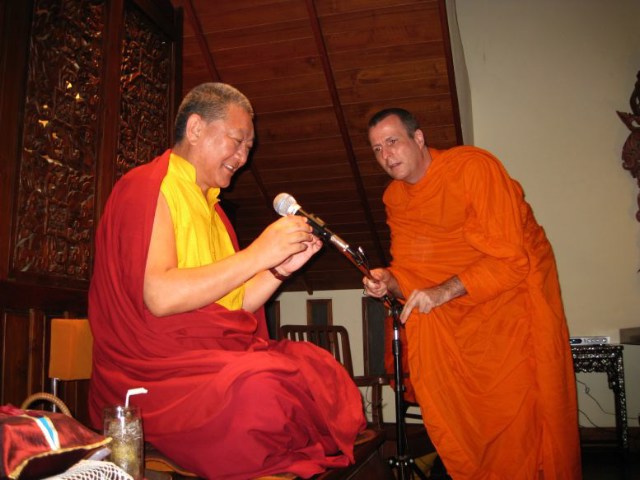
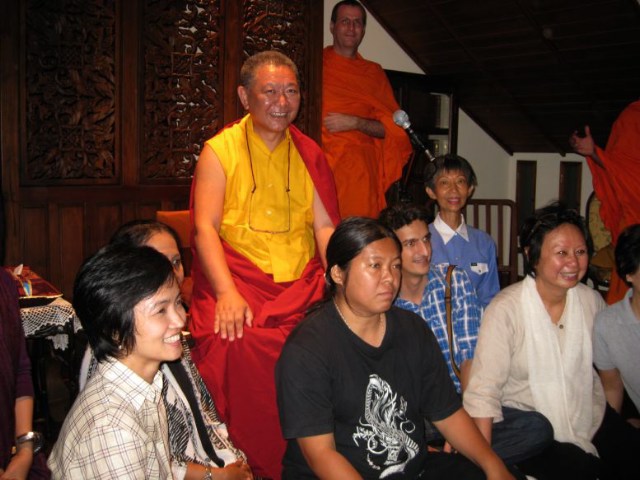


About the author Dr Andy Lowe
Andy has been a student of Ringu Tulku Rinpoche for around 20 years. He used to live Glasgow Scotland where for several years he co-ordinated a Dharma centre for the Samye Monastery in Glasgow under the guidance of both Akong and Yeshe Rinpoches. During the later part of his working life he was an academic at the University of Straythclyde Business School in Glasgow.
From July 2001 Andy relocated from the UK to Bangkok Thailand. He lives in Thailand as non-immigrant resident alien retired. Andy has been to Tibet several times. In 2002 he took part in a Mount Kailash pilgrimage. In 2004 he joined other students of Ringu Tulku Rinpoche on another pilgrimage to Rinpoche’s birthplace near Rigul Tibet. He still has an academic career as a research methodologist specializing in the grounded theory research methodology. He continues to supervise PhDs on line and is invited to give seminars throughout Asia. Recently Glyndwr University in Wales UK invited Andy to become a visiting professor specializing in the grounded theory research methodology.







Leave a Reply